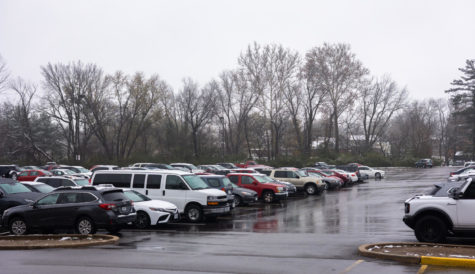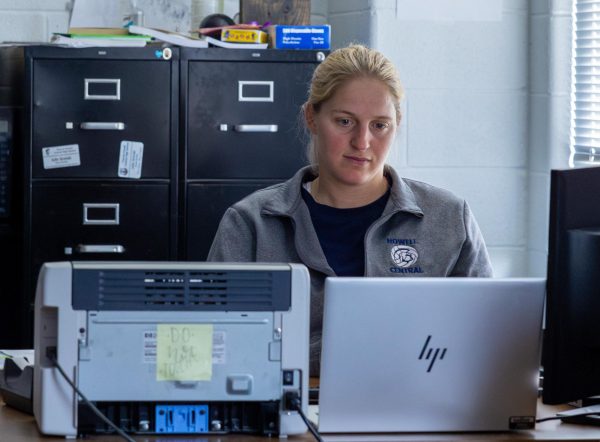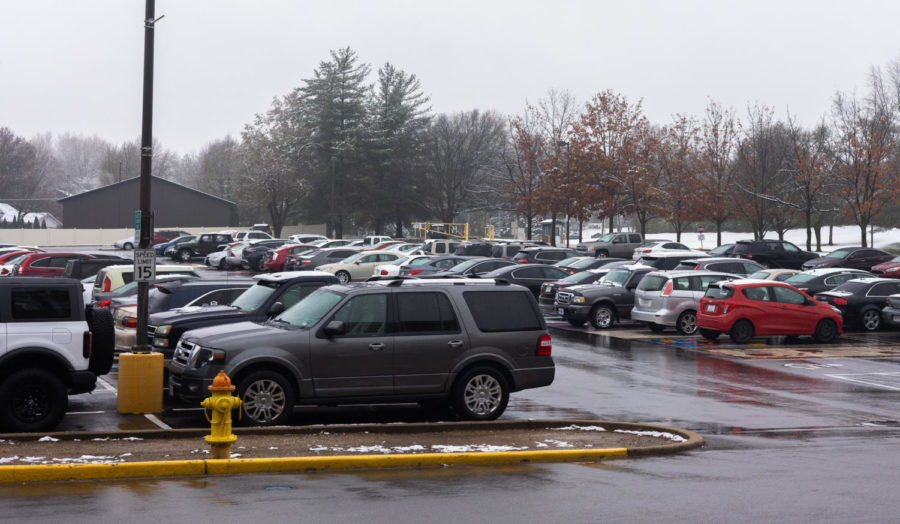Staying Safe when it’s Slick
The student parking lots sit full on the morning of Nov. 15th, the day of the school year’s first snow. When it comes to driving in clod, wet weather, two of the school’s teachers who are certified to teach Driver’s Education cautioned students to drive more defensively and to give themselves more time to get to their destinations.
As a mid western winter approaches, weather that can create some really tricky driving conditions come along, slick roads, a snow-clouded field field of vision and black ice are some considerable cold-weather driving concerns as black ice, a thin glazed coating of ice, while visible on foot, a driver is nearly blind to it. This can go multiple ways, but it depends on the driver.
The driver could be speeding where black ice happens to be and slide with no control. What happens now depends on the driver. The driver could panic and naturally slam on the brakes or the driver could lightly let off the gas pedal, crashes like these continue to happen and it’s important that students know how to let off the gas pedal and slide over the ice. Even though some may think it’s clear. On slick roads there’s a trick that Coach Andrew Carter, a part time drivers ed instructor, recommends, To take advantage of your car’s gears to keep a car more stable on slippery roads.
“There’s actually other gears in your car that you could shift into like lower gears. And you know, when you shift into these lower gears, it not only keeps your car moving slower, it gives the tires more traction on slick roads,”
When coming up to spots or just knowing potential weather that you think may give you some icy and snowy roads, switch your car to second or first gear for a safer drive. The only thing is that the driver will have to spend more time on the road then they may usually, when it comes to weather and situations where you’ll need more time, Coach Michael Bunton, a certified drivers ed instructor, recommends what to do.
“In this weather it’s best earlier and takes more time on the road, meaning you’ll need to take time to leave earlier going to school. definitely If it’s snowing, or if there’s ice, you need to make sure that you’re watching your speed and surroundings more closely.” Bunton explains.
When winter comes temperatures plunge and air becomes denser causing overall pressures to drop, subsequently, a driver may see that their tires look a little more flat than they should be. Well that’s because they are, tire pressure can decrease about 1 PSI (Pounds per square inch) every 10 degrees the weather drops. In order to avoid complications, Carter, recommends to consistently check your tire pressure

“It’s best if you check your tire pressure at least Twice a month during this weather, it’s better safe than paying hundreds of dollars for a new set. “ Carter says.
Tire pressure can be simply checked with a tire pressure gauge by just briefly pressing on the Stem of the tire and making sure it reaches the desired PSI of the car. Even though your tire may be full, that’s not the only thing you’ll want to worry about with your tires. Tire tread is an important factor to what keeps a car handling properly and if the tread of a tire is rubbed off can lead to some slippery situations, literally. To avoid the inevitable it’s safe to say. But Tire pressure and tire traction aren’t the only things that should be looked at consistently like car fluids Officer Troy Insera explains.
“Make sure you check all your fluids. washer fluid, oil, gas, coolant and that there where they need to be,” Officer Inserra said.
Even though these are some good things to know about what to do, there are so many more things to take in account. There are many other articles on the internet that provide many more things you can do to keep a car in good shape and running through the winter, just search it up or ask a loved one if there’s anything that can be done.
Your donation will support the student journalists of Francis Howell Central High School. Your contribution will allow us to purchase equipment and cover our annual website hosting costs. FHCToday.com and our subsequent publications are dedicated to the students by the students. We hope you consider donating to allow us to continue our mission of a connected and well-informed student body.





